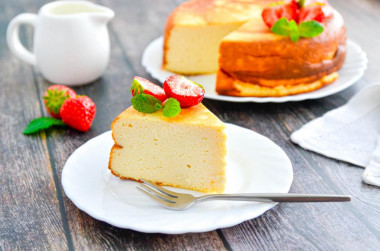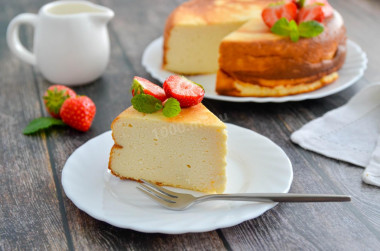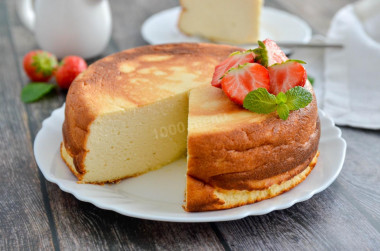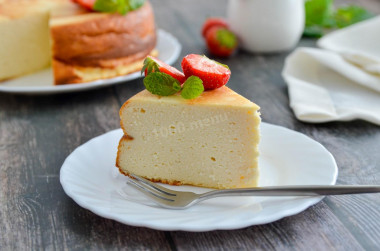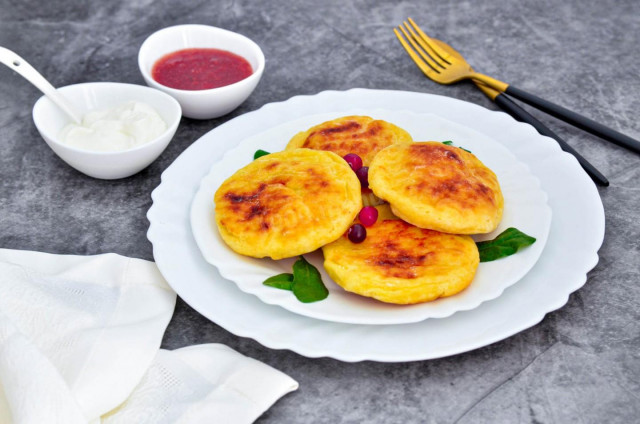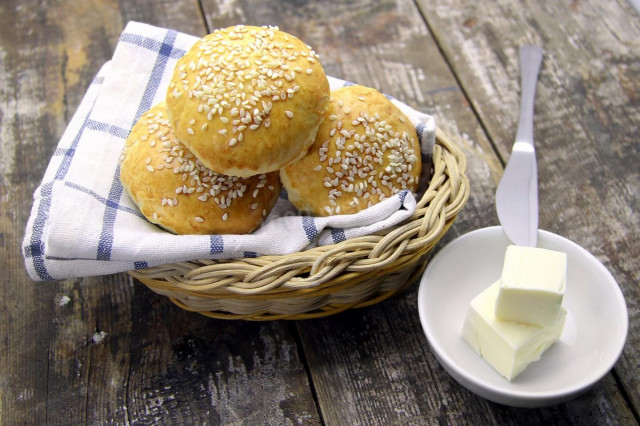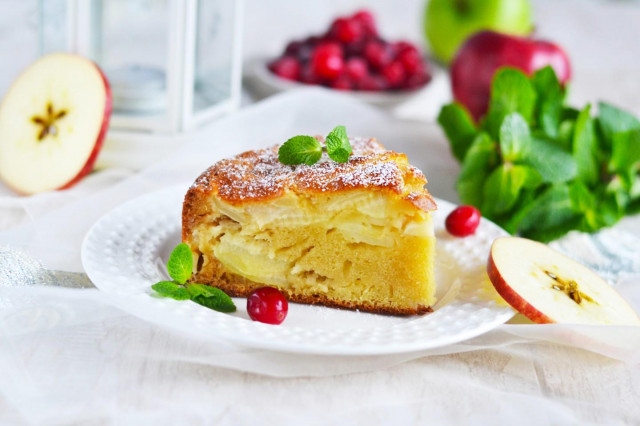Composition / ingredients
Step-by-step cooking
Step 1:

How to make an airy casserole? Prepare the products for her. Take a fat cottage cheese, it will make the most delicious casserole. Keep in mind that the calorie content will then be high. If the cottage cheese is dry, then add a small amount of sour cream or natural yogurt. With this amount of sugar, you will get a casserole of medium sweetness, look to your taste. Instead of flour, you can put corn starch, it will turn out even more tender.
Step 2:
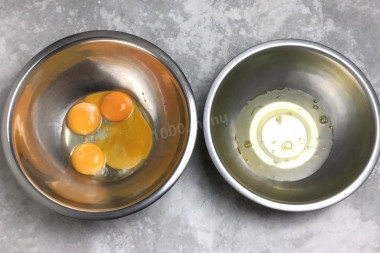
Divide the eggs into whites and yolks. Try to do this as carefully as possible so that the yolk does not get into the whites, even a drop of it can prevent them from whipping. Put the proteins in the refrigerator.
Step 3:

Add sugar, cottage cheese, vanilla and flour to the yolks.
Step 4:

Punch all the products with an immersion blender. Don't skip this step. The mass after whipping will become very tender and homogeneous, which will make the casserole airy and soft. Simple mixing of cottage cheese will not give such an effect. If you do not have a blender, then be sure to wipe the cottage cheese through a sieve.
Step 5:
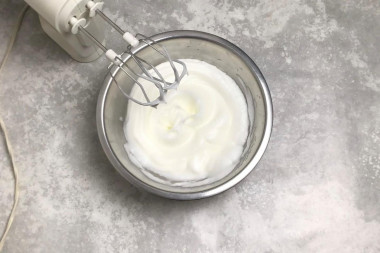
Take the proteins out of the refrigerator. Add a pinch of salt to them - this will help them beat up and enhance the taste of the rest of the products in the casserole. Beat the whites with a mixer to peaks - this is a condition when the blades of the mixer leave obvious traces that do not fall off after the end of whipping.
Step 6:

Add proteins to the bulk.
Step 7:
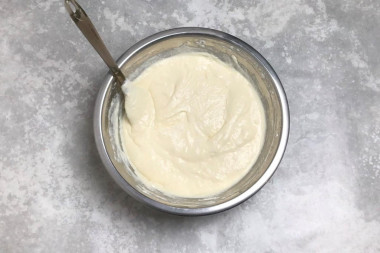
Gently, using a silicone spatula or whisk, mix the proteins into the cottage cheese. Do this with movements from the bottom up, as if you are burying proteins. It is the air in the whipped whites that will raise the future casserole when baking.
Step 8:

Take a baking dish. The smaller the shape is in size, the higher the casserole will turn out. Mine is 18 cm in diameter. Brush it with a small piece of butter.
Step 9:
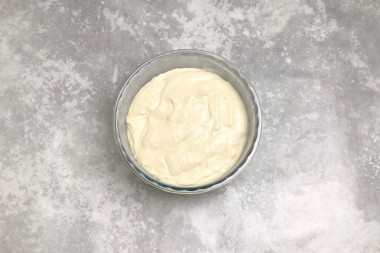
Pour the dough into the mold, level the top.
Step 10:

Bake the casserole in the oven, preheated to 190 ° C, top-bottom mode, for 45-50 minutes. Focus on the appearance of the casserole - it should become ruddy. The casserole rises very much during baking, and then, when it cools down, it falls off. This is normal, because it is prepared like a souffle, and has a similar structure. The casserole is delicious both warm and cold.
One of the best recipes I've cooked! Delicate, airy, moderately sweet. I recommend it!
How to check if the casserole is ready? As soon as a light golden crust forms on the surface, take a skewer and pierce the casserole in several places. If the skewer is dry, then the casserole is ready.
So that the oven has time to heat up to the desired temperature, turn it on in advance (10-20 minutes before the start of cooking).
Any heat-resistant form is suitable for this recipe. If you use a silicone mold, then you do not need to smear it with butter or margarine. But it is better to lightly lubricate metal, ceramic or glass dishes with vegetable oil so that the baking does not burn.
Caloric content of the products possible in the composition of the dish
- Chicken egg - 157 kcal/100g
- Egg white - 45 kcal/100g
- Egg powder - 542 kcal/100g
- Egg yolk - 352 kcal/100g
- Ostrich egg - 118 kcal/100g
- Cottage cheese of 40% fat content - 466 kcal/100g
- Cottage cheese of 20% fat content - 233 kcal/100g
- Cottage cheese of 18% fat content - 226 kcal/100g
- Cottage cheese of 10% fat content - 156 kcal/100g
- Low-fat cottage cheese - 75 kcal/100g
- Cottage cheese with sour cream - 260 kcal/100g
- Fruit cottage cheese - 147 kcal/100g
- Soft dietary cottage cheese - 170 kcal/100g
- Vitalinia cottage cheese - 64 kcal/100g
- Cottage cheese "morning" ( "danone") without sugar - 91 kcal/100g
- Cottage cheese - 156 kcal/100g
- Whole durum wheat flour fortified - 333 kcal/100g
- Whole durum wheat flour, universal - 364 kcal/100g
- Flour krupchatka - 348 kcal/100g
- Flour - 325 kcal/100g
- Granulated sugar - 398 kcal/100g
- Sugar - 398 kcal/100g
- Salt - 0 kcal/100g
- Vanillin - 288 kcal/100g


